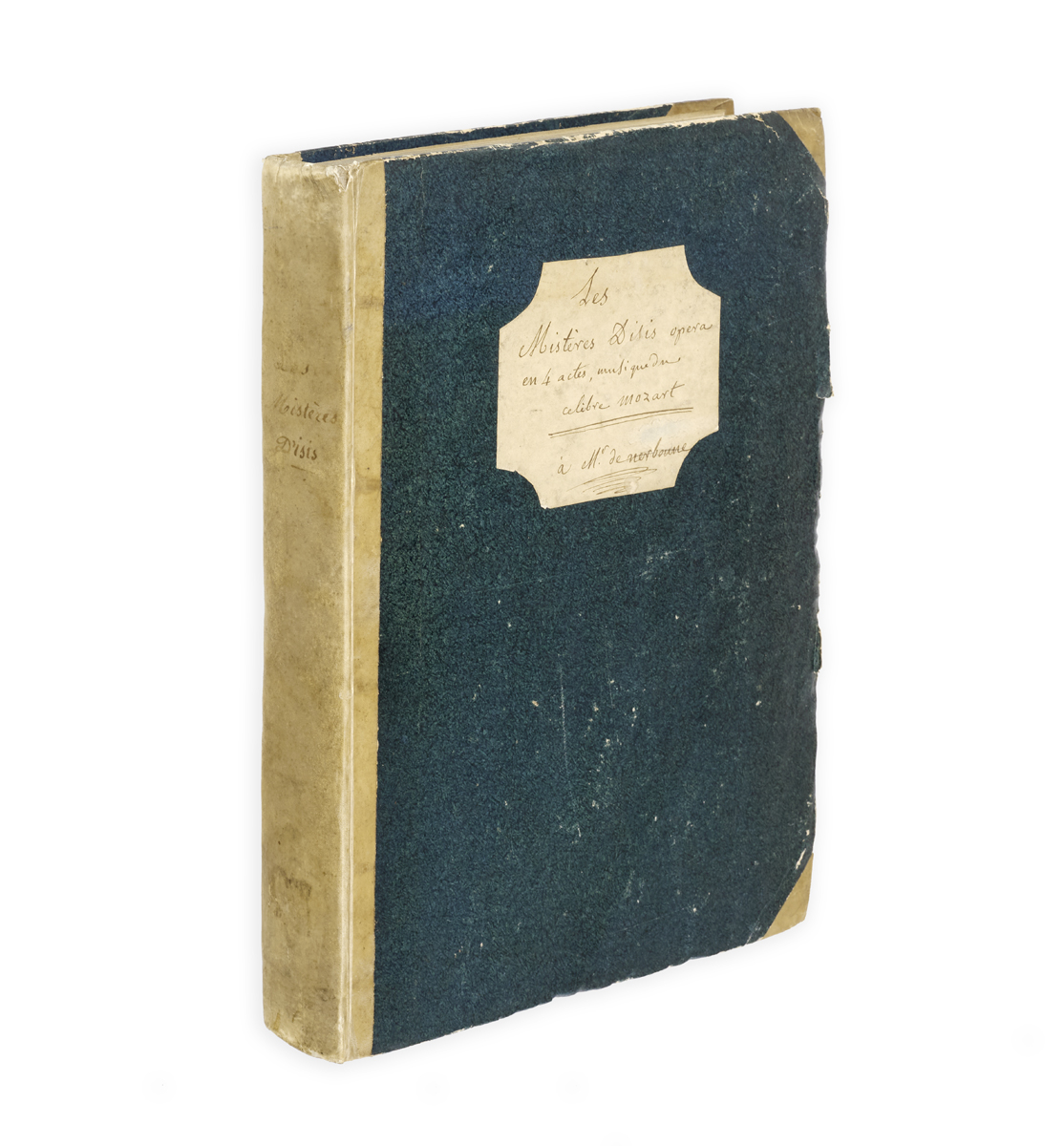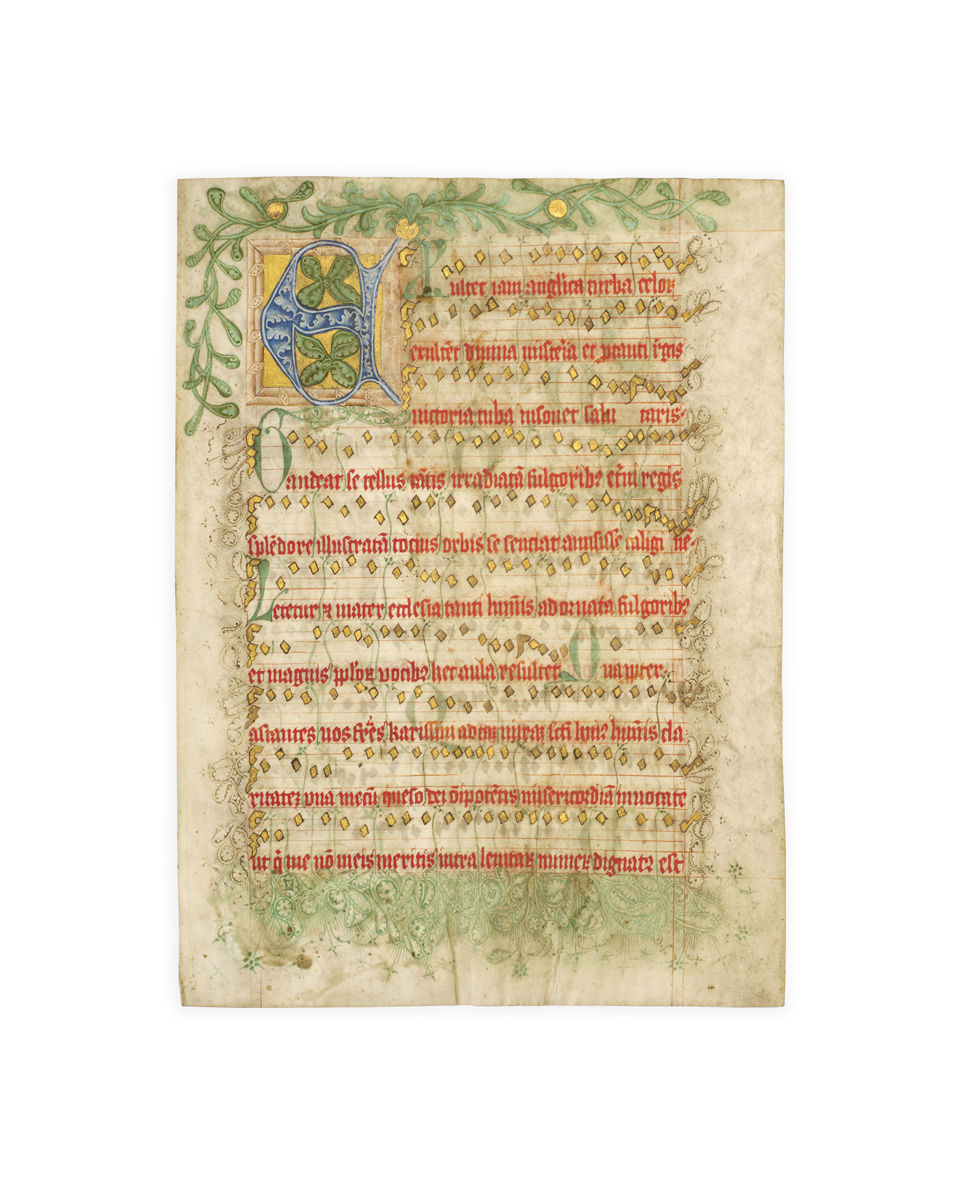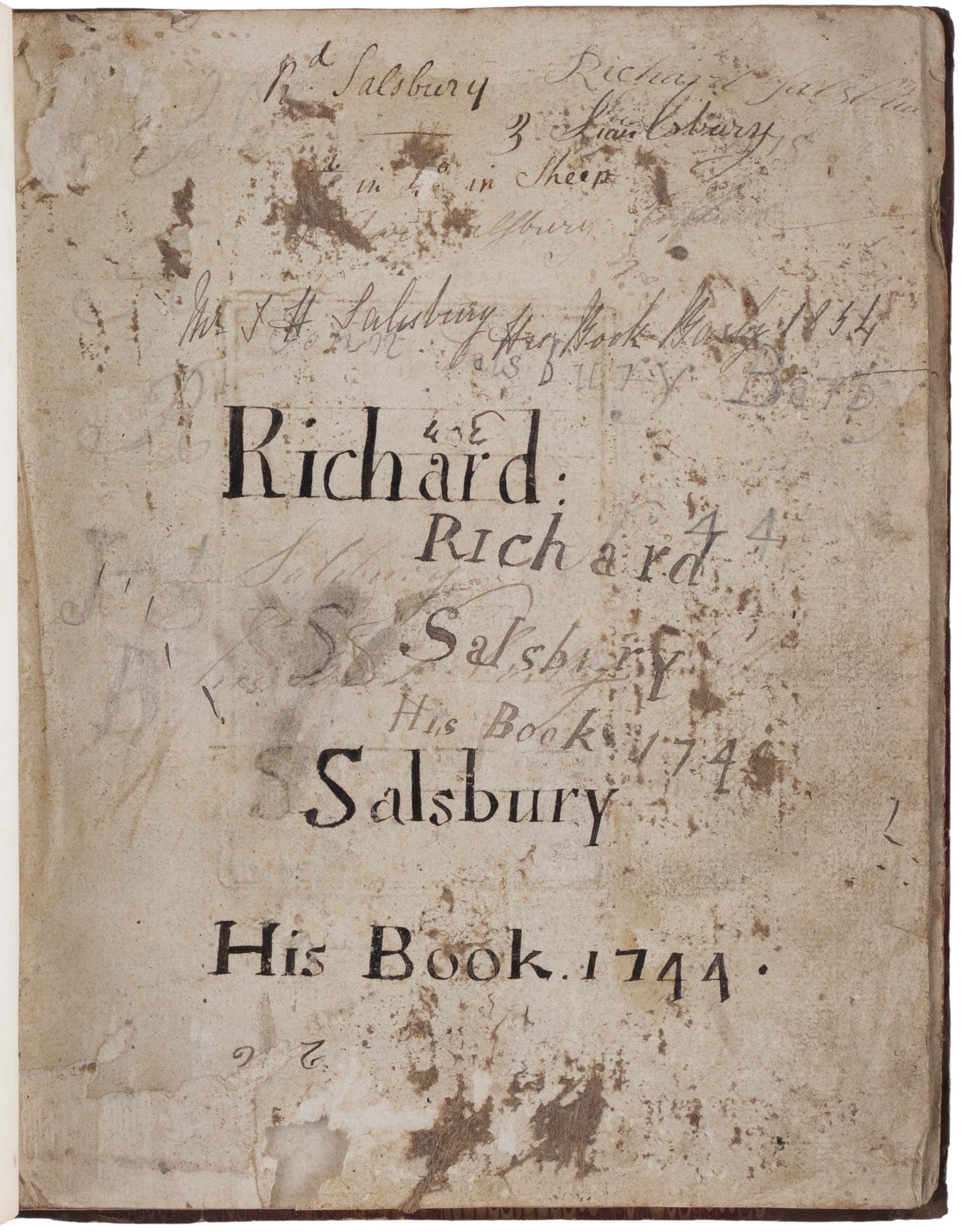
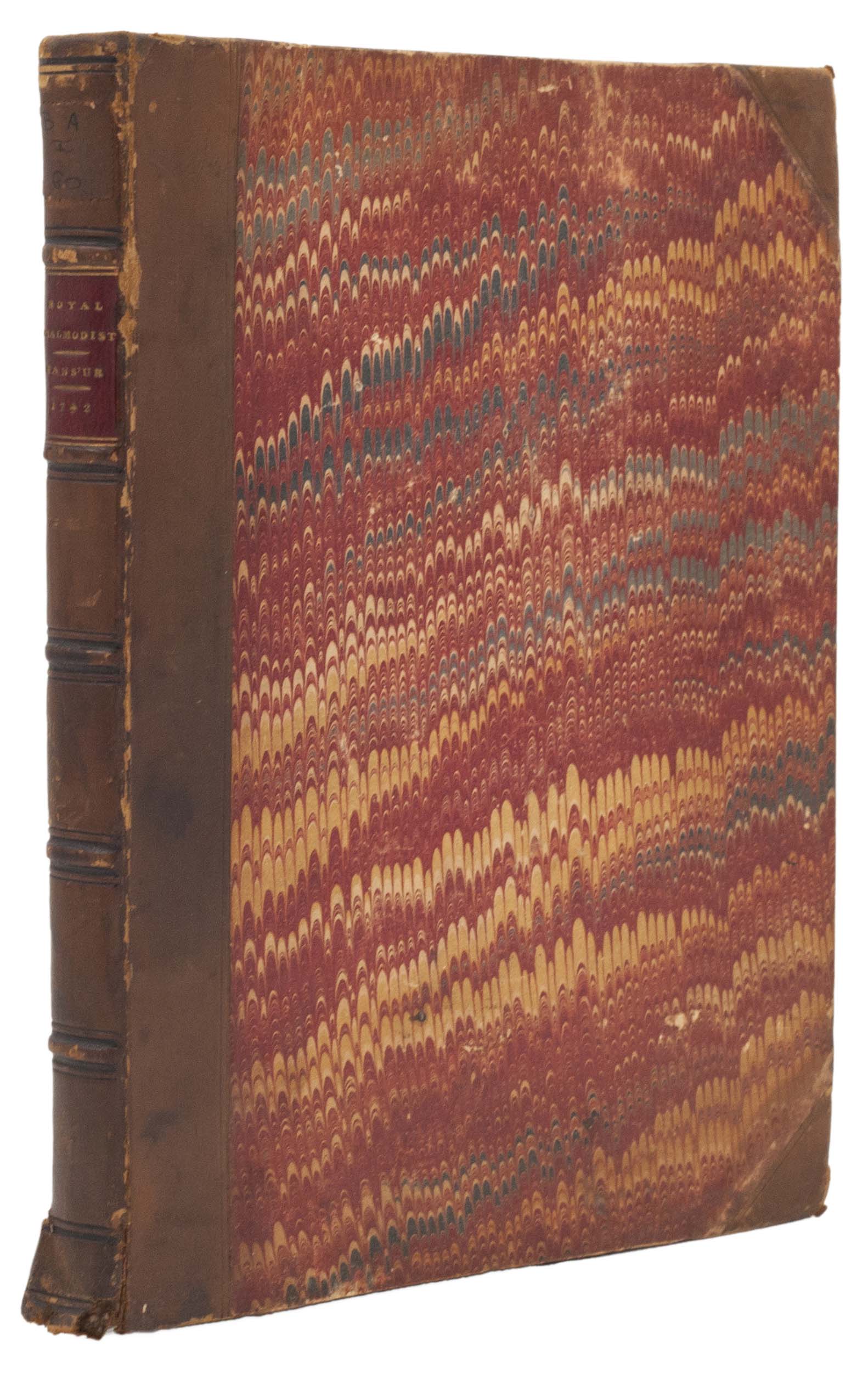

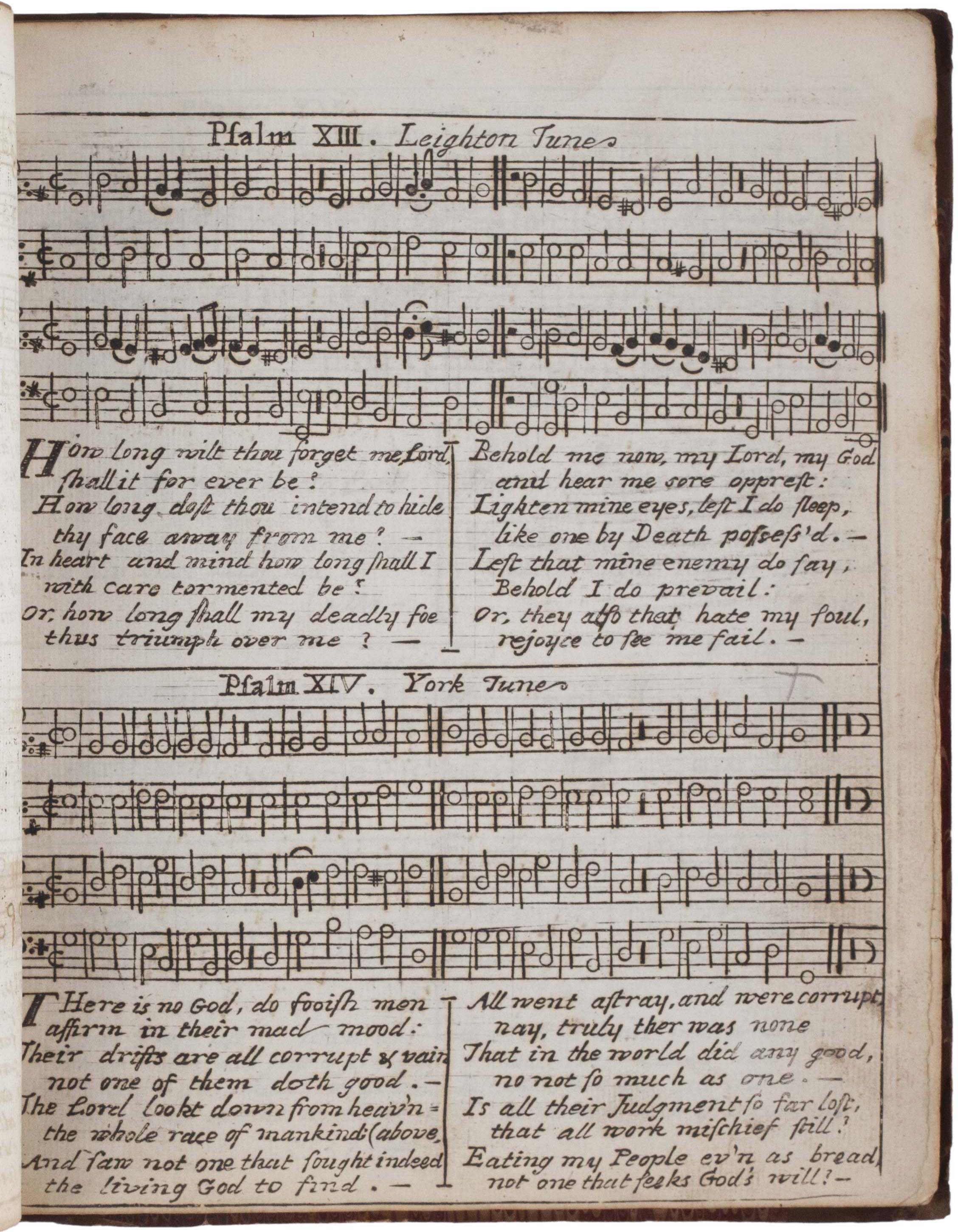
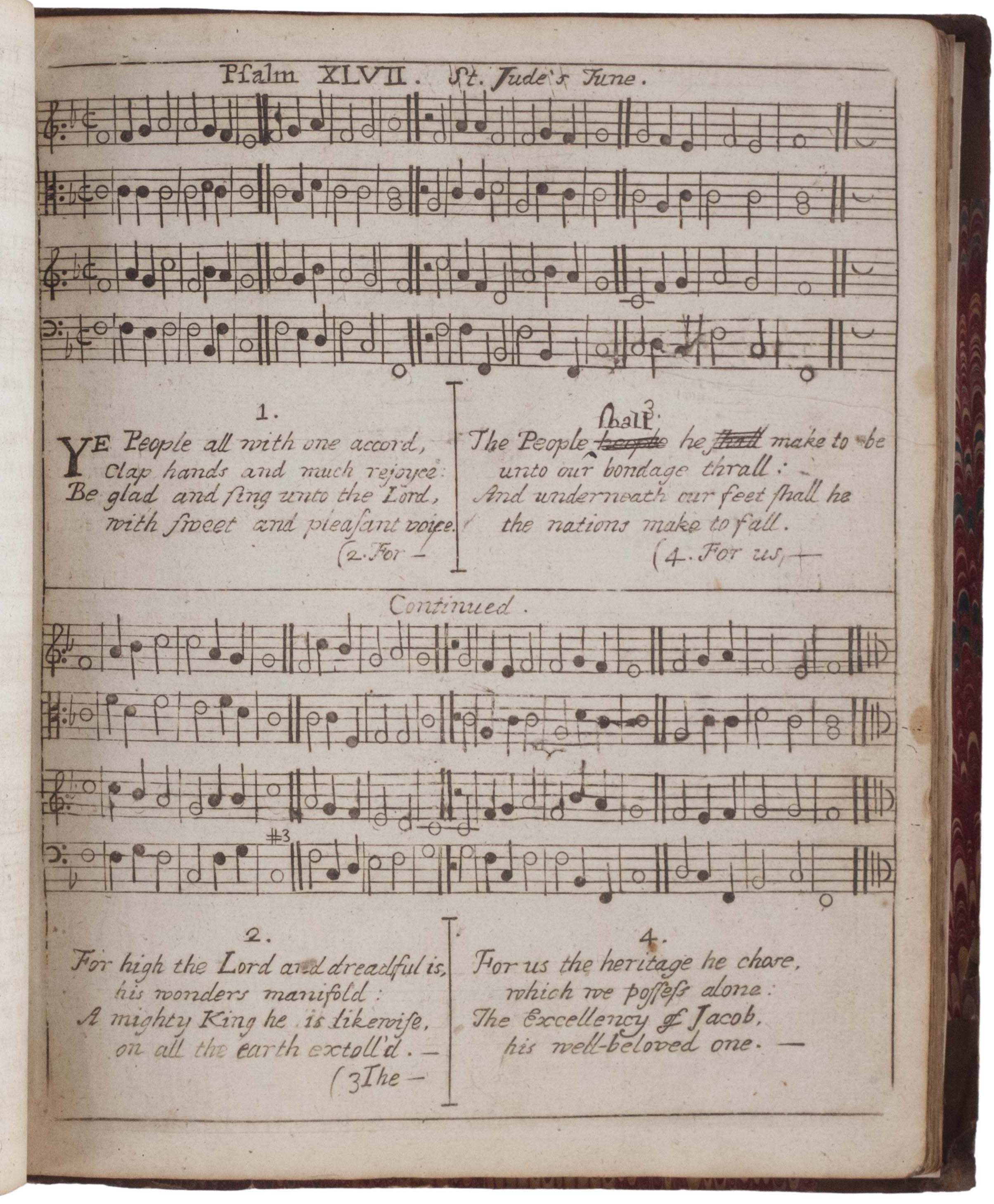
ENGRAVED AND PRINTED BY THE AUTHOR
TANS’UR, William.
The Royal Psalmodist compleat: or, the universal Harmony. Containing all the very best Tunes both old and new, adapted to the choicest Words of every one of the whole Book of Psalms … extracted from the best Masters, both ancient and modren [sic], and sett in correct Order, according to the Rules of Musick …
Rugby: Engraved, and printed by the Author, and published according to Act of Parliament: A. D. 1742. And sold by most Book[s]ellers in Town and Country.
4to, ff. [89], engraved throughout, comprising frontispiece, engraved title-page, subscriber’s leaf and 86 leaves of music, printed rectos only; slightly thumbed, a few blank margins torn without loss (weakness at the plate mark), some plates slightly pale from imperfect inking, else a very good copy in nineteenth-century quarter calf, bookplates of M. H. Bloxham and Rugby School; ownership inscriptions to blank recto of frontispiece - ‘Richard Salisbury 1744’, and some later; manuscript music fragment (possibly authorial) on the final blank verso.

Added to your basket:
The Royal Psalmodist compleat: or, the universal Harmony. Containing all the very best Tunes both old and new, adapted to the choicest Words of every one of the whole Book of Psalms … extracted from the best Masters, both ancient and modren [sic], and sett in correct Order, according to the Rules of Musick …
First edition, extremely rare, a collection of 150 psalm tunes (with settings in four parts) and one anthem, by the psalmodist and composer William Tans’ur (1700-1783).
Tans’ur seems to have become a teacher of music at an early date, and to have published psalmody collections from various locations throughout his career, the first being A Compleat Melody, or The Harmony of Sion (1735, with four further editions by 1744, all very rare). Although his son, also named William, was a chorister at Trinity College, Cambridge, Tans’ur himself ‘had no links with the upper strata of English musical life’, let alone the royal connections that the present title implies. ‘His field was country church music, and here he established a dominance that extended as far as the American colonies’ (Oxford Music online).
‘Tans’ur was one of the most successful exponents of the elaborate hymn tune of the time, with repeating last lines, solo sections and heavily ornamented melodies. His tunes were enormously influential, especially in America … Four of them were among the 15 pieces most often printed in America before 1811’ (ibid.). Indeed he was ‘the most reprinted British anthem writer to appear in late-eighteenth-century New England collections, as well as a singularly unrecognized contributor to American white gospel music’ (Russell Sanjek, American Popular Music and Its Business. The First Four Hundred Years, 1988).
The present collection was the first to be engraved, printed and published by Tans’ur himself, and was supported by weekly subscription. The subscribers’ list has 66 names in Warwickshire, Leicestershire and Northamptonshire, among them a William Salisbury, of Barby, presumably related to the Richard Salisbury who has signed this copy several times. Shortly after publishing the present work, Tans’ur seems to have settled in St Neots, as a stationer, bookseller, binder and music teacher.
Not in ESTC, BUCEM or RISM; ESTC records no edition earlier than that of 1745 (at UCLA), and BUCEM/RISM none earlier than 1748. Of this, the true first edition, we have traced copies at the British Library (2 imperfect copies), and UCLA only. An edition of 1743 (also possibly printed in Rugby), is recorded at Cambridge only.
